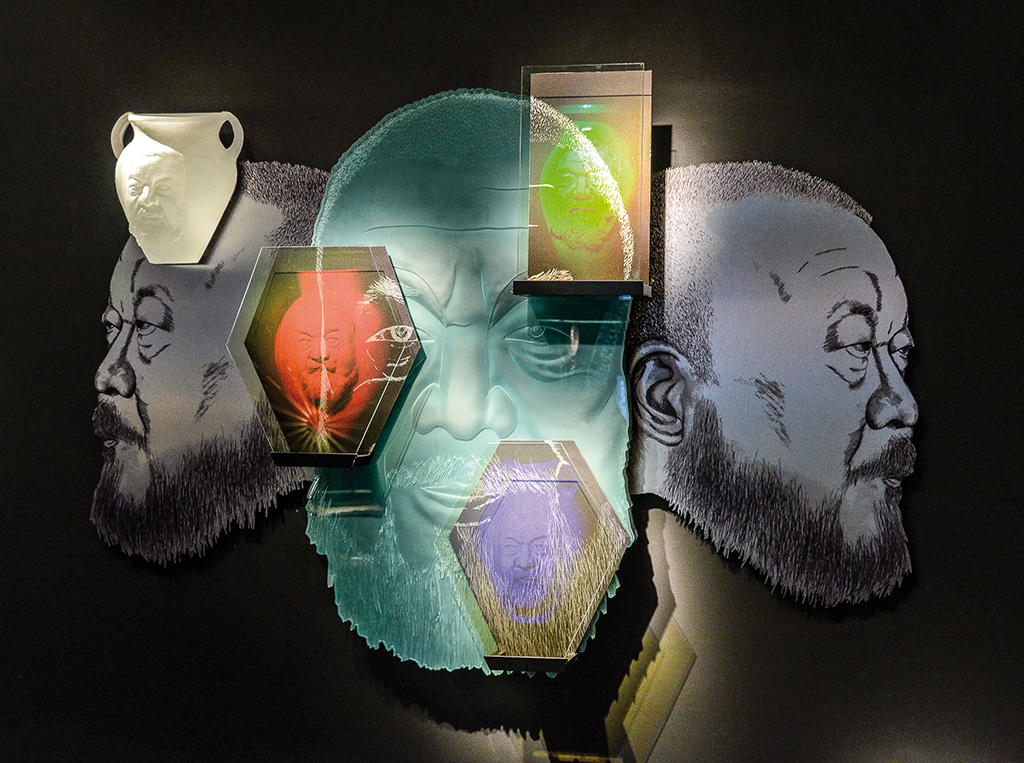In the Air (Ai Weiwei)
Materials Sandblasted glass, cast glass, printed drawing on aluminum and holograms
In the past few years, Ai Weiwei, the dissident Chinese contemporary artist has become the most widely seen and exhibited artist on the planet. One of the very interesting things about this remarkable person is that the work appears to have no overall particular point of view. He has allowed himself to explore all areas of the arts with amazing success. There are works based on ancient ideas, as well as very contemporary conceptual pieces. There are works based on both Asian and occidental traditions. There is flat art and sculpture. There is video and photography. The sculpture touches virtually every material. The work is extremely hard to pin down, yet each piece stands on its own as a formidable work. At this point in his life he has the resources to go wherever his mind chooses and that is a wonderful thing. I am enamored of his ability to think outside the box and continually come up with something new and important to say.
For this brief documentary excursion into Ai Weiwei and the subject matter of his works, it was necessary narrow the vision a bit and focus on certain important aspects that I felt would make a crisp statement that would best define this visionary artist. One of his better-known conceptual pieces is the triptych photo that documents him dropping a 6th century Han Dynasty vase. He has also taken to making modern work by transforming old found objects such as clay pots into reassembled new work repainting them and creating environments where they work together to make a statement where the pots no longer stand on their own but work together to form a larger sculptural statement. Ai Weiwei is a brand and for this reason I have chosen to put his face on everything in the piece. I have used holograms and monochromatic color to indicate his presence on the world stage even when he was not able to be present at the many international exhibitions in which he participated. This was due to the removal of his passport for a period of four or five years rendering him unable to travel. He was there without ever being there. The falling vase can be seen by moving from the cast glass version in the upper left tumbling through the air-like holograms to the broken shards in bronze at the bottom right. The two profile photos of my drawings of Ai Weiwei symbolize his facing toward his Chinese culture and toward the culture of the rest of the world for his inspiration. In the middle is the man behind the work looking out to see what’s next.
On July 22, 2015 Ai Weiwei had his passport returned and has subsequently moved to Germany, to be with his son. In 2019 he moved to Portugal where he seems to have found a comfortable place to live and work.
